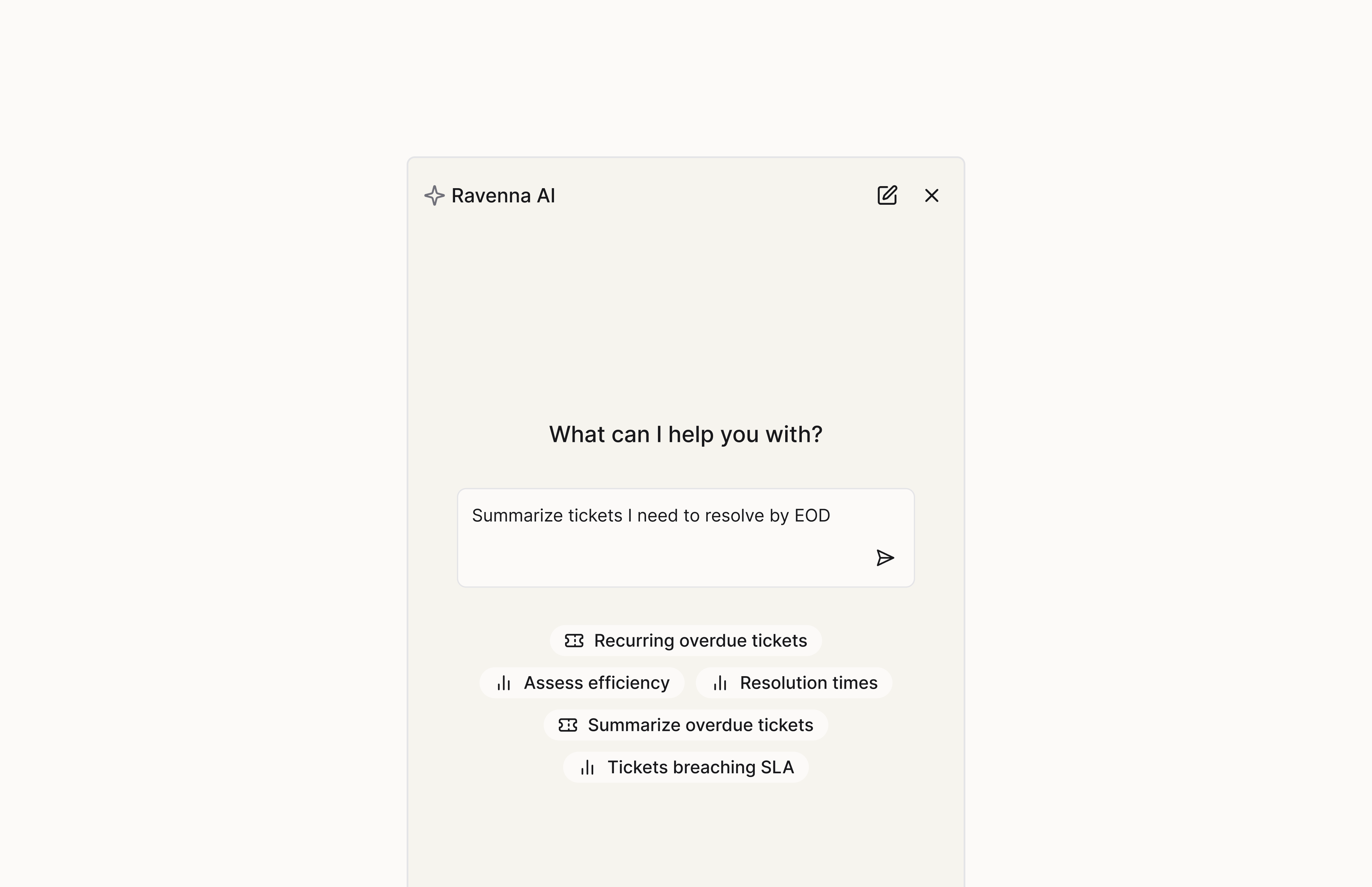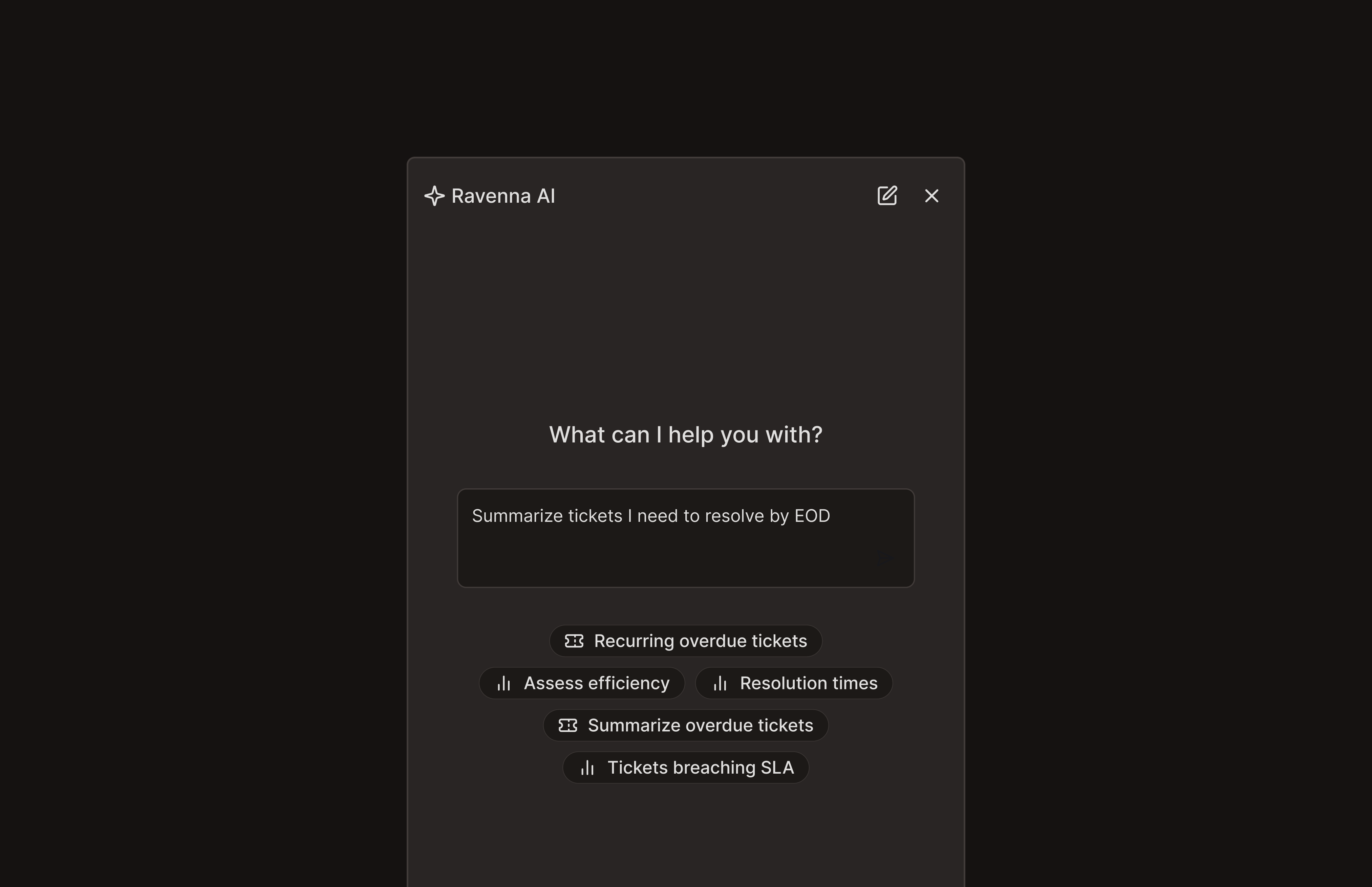This feature is currently in
BETA

Contexts
The AI side panel can be accessed from every page and automatically pulls in context within certain resources. This makes it easy for your team to navigate around the app and automatically begin engaging with the Ravenna AI chat panel based on what they’re viewing.Tickets


Summarize
Analyze the entire ticket conversation to identify key discussion points, highlight important decisions, note any action items, and generate a clear, concise summary.Draft Responses
Get a head start on your replies. Ravenna AI can draft responses based on the ticket content and context, which you can then review and customize before sending.Back-and-forth
Talk with Ravenna AI about the ticket. Ask follow-up questions, request clarifications, or seek additional information to ensure you have a complete understanding of the issue at hand. You can ask it related questions about the ticket and the AI will pull from the available knowledge resources to best help you.Knowledge


Chat
You can ask Ravenna AI questions about your knowledge base. It will pull from the articles in your knowledge base to provide accurate and relevant answers.Identify Knowledge Gaps
Chatting with your knowledge base can help you identify gaps in your documentation. If Ravenna AI struggles to find answers to certain questions, it may indicate areas where additional articles or updates are needed.Internal Knowledge
Scope knowledge to Ravenna AI, this allows you to securely store, organize, and share information that is only accessible to your agents. By scoping access to your team members, you can confidently document sensitive processes, troubleshooting steps, and internal best practices without worrying about visibility outside your group. With Internal Knowledge, teams can:- Centralize critical information: Collect processes, FAQs, and decision logs in one place so team members can quickly find what they need.
- Enable faster problem-solving: Give your team immediate access to past learnings and resolutions, reducing repeated effort and speeding up issue resolution.
- Preserve organizational memory: Capture knowledge that might otherwise be lost in chat threads or individual documents, making onboarding and collaboration more efficient.
Workflows



